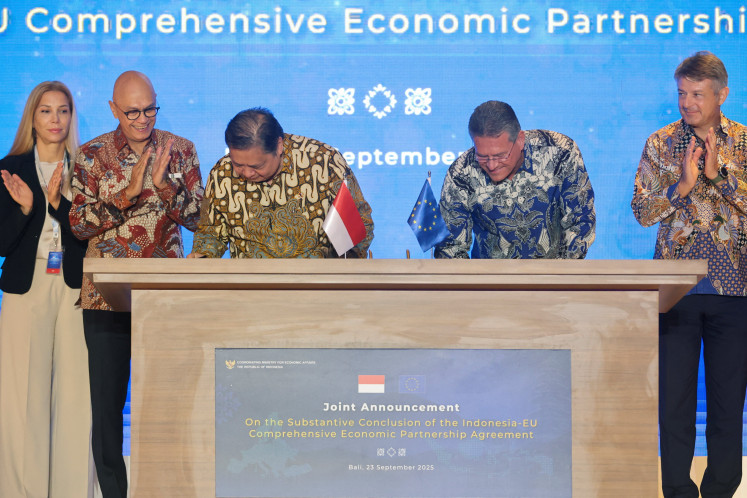Popular Reads
Top Results
Can't find what you're looking for?
View all search resultsPopular Reads
Top Results
Can't find what you're looking for?
View all search resultsNavigating the storm in the multi-finance industry
Amid the slowdown in financing growth this year, the multifinance industry needs to find new strategies that can adapt and innovate with current conditions to stay both competitive and relevant.
Change text size
Gift Premium Articles
to Anyone
T
he multi-finance industry faces significant challenges, as financing growth has slowed this year. As of August 2025, financing grew at a modest 1.3 percent year-on-year (yoy) to Rp 505.59 trillion (US$30.5 billion). While this reflects positive momentum, it remains well below the growth rates of previous years. For comparison, August 2024 saw 10.2 percent yoy growth to reach Rp 499.3 trillion.
What is behind the growth slowdown in the multi-finance industry? It is mainly driven by two challenges: weaker purchasing power and a shift in consumer spending behavior. This underscores ongoing economic pressures and signals a need for the industry to adapt and find new strategies.
First, purchasing power is weakening, as reflected in the shrinking middle class. According to Statistics Indonesia (BPS) data on household expenditure, the middle class’s share in the national population declined from 21.5 percent in 2019 to 17.1 percent in 2024. Over the same period, the aspiring middle class edged up from 48.2 percent to 49.2 percent, while the vulnerable group expanded from 20.6 percent to 24.2 percent.
This compositional shift poses a challenge for multi-finance companies. A smaller middle-class segment implies a narrower core customer base and softer demand for financing products particularly motor vehicles, which dominate financing in the multi-finance industry.
Secondly, the decline in purchasing power has shifted household spending patterns into “survival mode”. Individuals are focusing their budgets on day-to-day needs and reducing savings or loan repayments.
Throughout 2025, Bank Indonesia’s surveys on household expenditure showed that 74.8 percent was allocated to consumption, compared with 68.5 percent in 2019. Savings accounted for 14.3 percent, down from 19.6 percent in 2019, while loan repayments stood at 10.9 percent, declining from 11.9 percent in 2019.
Lower loan repayments show that households are cutting debt, which could weaken loan demand and negatively affect the multi-finance industry.


















